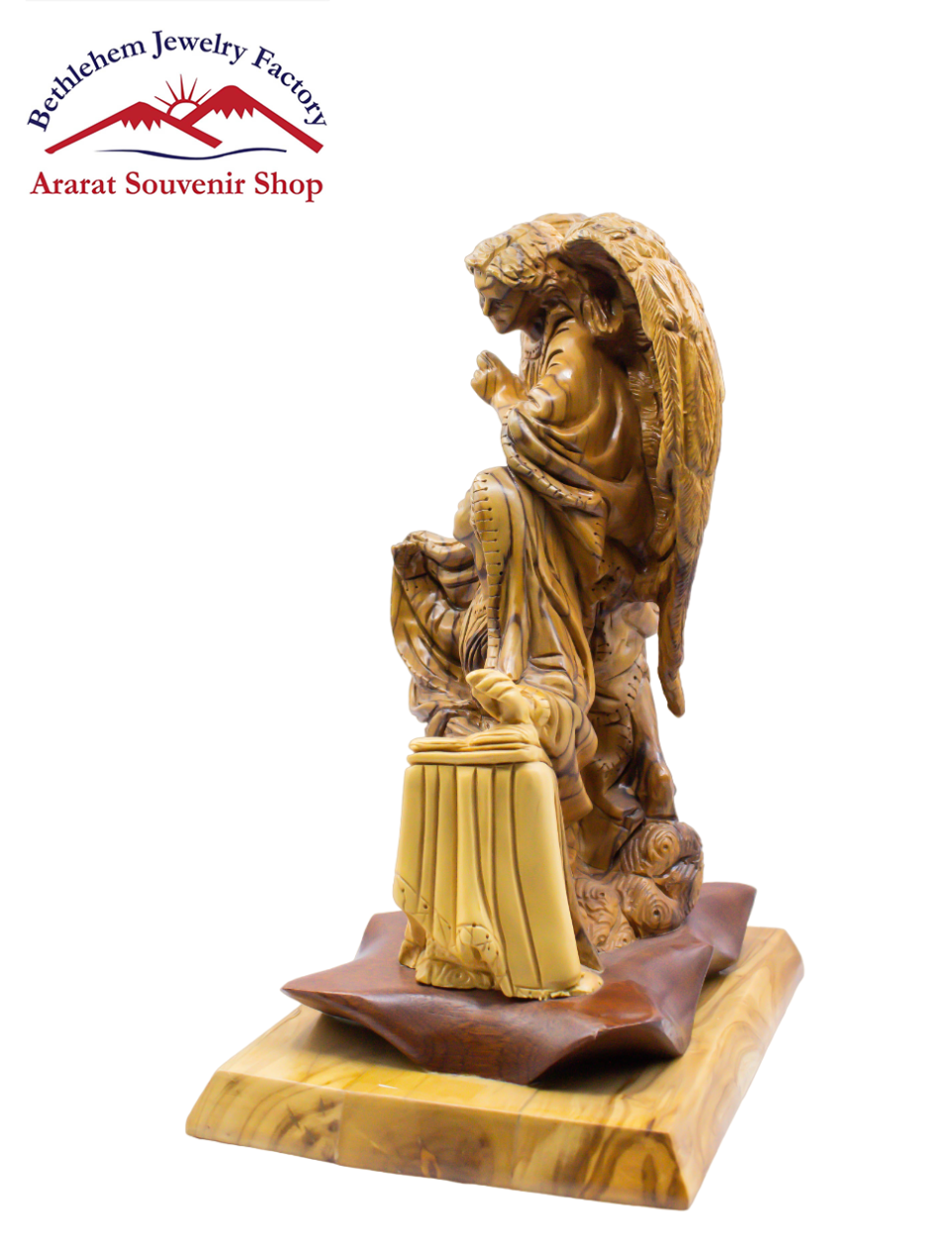Angel Gabriel Goes to Mary
The story of the Angel Gabriel’s visit to Mary, often referred to as the Annunciation, is a pivotal moment in the Christian tradition. This account is primarily found in the Gospel of Luke (Luke 1:26-38) and is celebrated for its profound implications for faith, obedience, and the divine nature of Jesus Christ.
The narrative begins in the town of Nazareth in Galilee, a place of relative obscurity, where Mary, a young woman betrothed to Joseph, lives a quiet and devout life. The passage opens with the announcement of Gabriel’s arrival, described as an angel of God sent specifically to Mary, chosen for a unique and sacred purpose. Gabriel is often interpreted as a messenger of God, charged with delivering news that alters the course of history. His appearance is dramatic and awe-inspiring, as is typical of angelic encounters in biblical literature, symbolizing the importance of the message he is about to convey.
As Gabriel enters, he greets Mary with words that echo with divine favor: “Greetings, you who are highly favored! The Lord is with you.” This salutation sets a tone of reverence and surprise, indicating that Mary has been chosen among many for an extraordinary mission. Initially, Mary is troubled by the greeting, concerned about what it means and why she, a humble girl from Nazareth, has received such a message. This initial reaction highlights her modesty and the weight of the revelation she is about to receive.
Gabriel reassures Mary, telling her not to be afraid. He reveals that she will conceive a child by the Holy Spirit, giving birth to a son named Jesus, who will be called the Son of the Most High. This proclamation is steeped in theological significance. It signifies the incarnation—the belief that God took human form in Jesus. Gabriel elaborates on the child’s future, stating that Jesus will reign over the house of Jacob forever, and his kingdom will have no end, fulfilling the Jewish messianic prophecies.
The news is astonishing, especially given Mary’s circumstances. Being a virgin engaged to Joseph, the societal and personal implications of bearing a child under such conditions could lead to scandal and ostracism. In this moment of confusion and fear, Mary asks Gabriel a profound question: “How will this be, since I am a virgin?” Her inquiry reflects her sense of wonder and her desire to understand the mechanism of such a miraculous event, demonstrating her intelligence and discernment.
Gabriel’s response deepens the mystery and miracle of the event. He explains that the Holy Spirit will come upon her, and the power of the Most High will overshadow her, thus making the conception possible. This divine intervention underscores the belief that Jesus is not merely a human; he is also fully divine. To further reassure Mary, Gabriel mentions that Elizabeth, her relative, who was believed to be barren, is also miraculously pregnant, emphasizing that nothing is impossible with God. This reassurance serves to strengthen Mary’s faith, illustrating God’s capability to fulfill His promises, even in seemingly impossible situations.
In a remarkable display of faith and obedience, Mary responds to Gabriel’s message with acceptance. “I am the Lord’s servant,” she declares. “May your word to me be fulfilled.” This statement embodies her unwavering trust in God and willingness to participate in His divine plan, setting an example for believers throughout history. Mary’s acceptance of her role as the mother of Jesus symbolizes her profound faith and willingness to submit to God’s will, despite the uncertainties that lie ahead.
The Annunciation is not only a narrative of God’s plan for salvation through Jesus but also a testament to the role of women in biblical history and theology. Mary’s courage and faithfulness take center stage, exemplifying how ordinary individuals can be called to extraordinary tasks by God.
The significance of the Annunciation extends beyond the biblical narrative; it resonates with themes of hope, divine purpose, and the transformative power of faith. For Christians, it represents the moment when God enters human history in a profound and personal way, emphasizing the love and grace that define the Christian faith. Mary’s story serves as a foundation for devotion and reverence to her role in salvation history, making the Annunciation a cornerstone event celebrated in many Christian liturgies and traditions.
In conclusion, the visit of the Angel Gabriel to Mary is a dramatic and foundational moment that bridges the divine and the human. It signifies the beginning of the incarnation, encapsulating themes of faith, obedience, and divine fulfillment. Through this encounter, believers are invited to reflect on their own responses to God’s calling and the profound mystery of faith that continues to inspire and challenge generations. Mary’s journey illustrates that, while the path may be fraught with uncertainties, trust in God can lead to transformative outcomes that shape the course of history.












Reviews
There are no reviews yet.